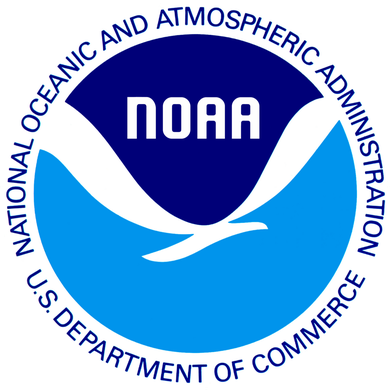NOAA Fisheries, also known as the National Marine Fisheries Service, is an office of the National Oceanic and Atmospheric Administration (NOAA) within the Department of Commerce. NOAA Fisheries collaborates through many efforts with other government agencies to minimize the impacts of development on coastal habitats and recommend mitigation measures for actions that harm habitat. NOAA Fisheries also works with other public agencies and stakeholders involved in restoration projects, by providing funding and technical assistance throughout California, Idaho, Oregon, and Washington.
NOAA Fisheries and the U.S. Fish and Wildlife Service (USFWS) share responsibility for implementing the Endangered Species Act. NOAA Fisheries is responsible for endangered and threatened marine and anadromous species—from whales and seals to sharks, salmon, and corals. The USFWS is responsible for most terrestrial and freshwater species but also has responsibility for several marine mammal species like walruses, sea otters, manatees, and polar bears.
Offices in California
The West Coast Region (WCR) includes four Area Offices – the California Coastal, California Central Valley, Interior Columbia Basin, and Oregon and Washington Coastal Area Offices. These four Area Offices advance the WCR’s mission by conserving anadromous fish, their habitats, and the ecosystems on which they depend. They are also responsible for marine habitat conservation along the West Coast.
The California Coastal Office includes four offices located in Yreka, Arcata, Santa Rosa, and Long Beach. Their responsibilities focus on protecting species and their habitats along the California coastline and its associated watersheds, including the entire Klamath River Basin. They work to protect species listed under Endangered Species Act by evaluating the impacts of proposed federal actions, developing and implementing recovery plans, ensuring safe fish passage through federal and some private dams, and seeking conservation partnerships with local governments and landowners. Using local, on-the-ground knowledge, their priorities focus on land use practices and other threats that limit particular recovery and restoration activities. They work with local communities and a diverse group of stakeholders to ensure that mutually beneficial conservation strategies are realized.
The California Central Valley Office focuses on the Sacramento and San Joaquin River Basins and Sacramento-San Joaquin Delta. They work in these river basins to protect species listed under the Endangered Species Act by evaluating the impact of proposed federal actions, developing and implementing recovery plans, seeking conservation partnerships with local governments and landowners, and ensuring safe fish passage past federal and some private dams.
Specifically, the Area Offices:
- Implement Endangered Species Act (ESA) Sections 4, 7, and 10; Magnuson Stevens Act (MSA) essential fish habitat (EFH) provisions, the Federal Power Act (FPA), and Fish and Wildlife Coordination Act (FWCA) in their geographic areas;
- Consult with Federal, tribal, and state agencies that authorize, fund, or undertake actions that may adversely affect ESA-listed species or EFH;
- Consult on projects to improve fish passage, and provide technical assistance to states, tribes, and others seeking to improve habitat conditions for managed and ESA-listed species;
- Develop and implement salmon, steelhead, and green sturgeon recovery plans, with a particular focus on habitat; and
- Develop science-based strategies and effective partnerships to recover and conserve West Coast trust resources.
- Work on interagency review teams with mitigation/conservation bankers on establishing high-quality mitigation in the West Coast Region.
Sources: West Coast Area Offices web page, NOAA Fisheries Laws and Policies web page.
More Resources:

Accelerated Permitting Pathways
- North Coast NMFS Programmatic Biological Opinion (PBO)
- Central Coast NMFS Programmatic Biological Opinion (PBO)
- North and Central Coast Federal Consistency Determination (CD) – Coastal Commission and NOAA Restoration Center
- Central Valley NMFS Programmatic Biological Opinion (PBO)
- Suisun Marsh NMFS Programmatic Biological Opinion (PBO)
- South Coast NMFS Programmatic Biological Opinion (PBO)
- South Coast Federal Consistency Determination (CD) – Coastal Commission and NOAA Restoration Center
- Santa Cruz County Partners in Restoration Permit Coordination Program (PIR)
- NOAA Restoration Center Programmatic Environmental Impact Statement (EIS)
